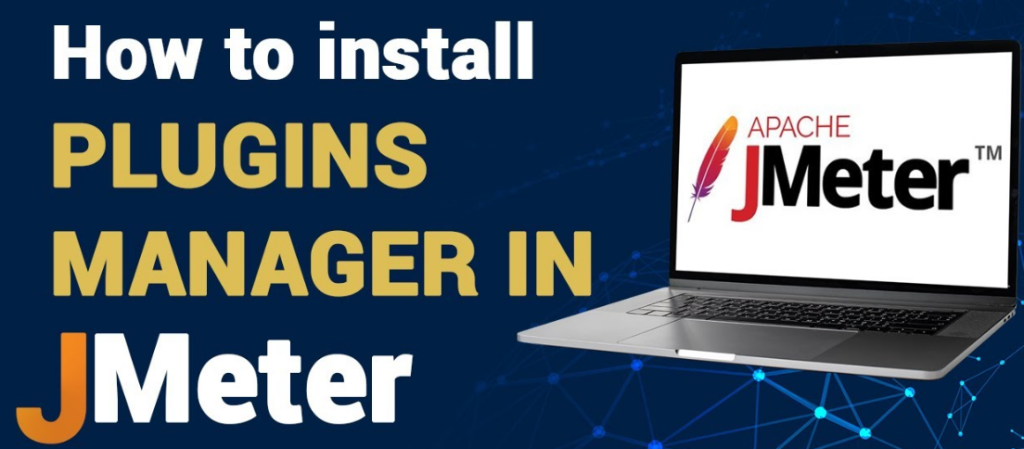
Apache JMeter is a versatile tool for performance testing, but its default features sometimes fall short of meeting specific testing needs. The JMeter Plugin Manager allows users to easily extend JMeter’s functionality by adding a variety of plugins that enable new features, enhance reporting, and improve user interface elements. With the Plugin Manager, managing plugins is straightforward, enabling users to install, update, and remove plugins directly from JMeter’s interface.
Benefits of JMeter Plugin Manager

The JMeter Plugin Manager offers several advantages:
- Expanded Capabilities: Plugins introduce additional testing protocols, advanced samplers, and visualizations to make performance testing more comprehensive.
- Ease of Use: Installing plugins manually can be challenging, but the Plugin Manager simplifies the process, letting users install plugins with a few clicks.
- Efficient Updates: Plugin Manager makes it easy to update plugins, keeping all installed components compatible with the latest JMeter features.
With the Plugin Manager, users can fully customize their JMeter experience to suit specific testing requirements without needing extensive technical setup.
How to Install JMeter Plugin Manager

To use the JMeter Plugin Manager, you need to install it first. Follow these steps to set up the Plugin Manager in JMeter:
- Download the Plugin Manager
- Visit the official JMeter Plugins website and download the JMeterPlugins-Manager.jar file.
2. Install the Plugin Manager
- Copy the downloaded JMeterPlugins-Manager.jar file.
- Go to your JMeter installation directory, then navigate to the /lib/ext folder.
- Paste the JMeterPlugins-Manager.jar file into the /lib/ext directory.
3. Restart JMeter
- Close and reopen JMeter to complete the Plugin Manager installation. Once JMeter is restarted, you should see a “Plugins Manager” option under the Options menu.
The Plugin Manager is now installed and ready to use, allowing you to add a wide range of plugins directly from within JMeter.
How to Use JMeter Plugin Manager
Using the Plugin Manager is simple. Here’s a quick guide on how to access, browse, and manage plugins.
1. Accessing the Plugin Manager
- Open JMeter and go to the Options menu.
- Click on Plugins Manager to open the Plugin Manager interface.
2. Browsing and Installing Plugins
- In the Plugin Manager window, browse through the list of available plugins. Each plugin includes a description to help you understand its functionality.
- To install a plugin, check the box next to the plugin name and click Apply Changes and Restart JMeter. JMeter will restart with the newly installed plugins ready for use.
3. Managing Installed Plugins
- The Plugin Manager also lists all installed plugins under the Installed Plugins tab.
- Here, you can check for updates, uninstall plugins, or disable them as needed.
The Plugin Manager simplifies adding advanced features to JMeter, enhancing your test plans with minimal setup.
Popular JMeter Plugins and Their Use Cases

Here’s a list of some of the most popular JMeter plugins and how they can enhance your testing:
- Custom Thread Groups
- Adds custom Thread Groups like Stepping Thread Group and Concurrency Thread Group that allow for more precise user load simulations.
- Use Case: Useful for scenarios requiring a specific ramp-up pattern or concurrent user testing.
2. Dummy Sampler
- A lightweight sampler that can be used to simulate requests without actually sending any data. Useful for testing complex test plans without impacting the server.
- Use Case: Ideal for testing JMeter configurations or for use in training scenarios.
3. PerfMon Metrics Collector
- Collects and displays server-side metrics like CPU, memory, and network usage.
- Use Case: Essential for monitoring server performance metrics alongside JMeter results.
4. JSON Path Extractor
- An extractor that simplifies working with JSON responses by extracting data directly from JSON objects.
- Use Case: Helpful for API testing, especially with RESTful services returning JSON responses.
5. Throughput Shaping Timer
- Controls the throughput rate of JMeter requests, ensuring that requests are sent at a specified rate.
- Use Case: Great for load testing where requests per second need to be limited or shaped.
These plugins, and many others, can significantly enhance JMeter’s core capabilities, allowing users to design more flexible and sophisticated test plans.
Best Practices for Using Plugins in JMeter
- Choose Only Necessary Plugins: Installing too many plugins can slow down JMeter and lead to compatibility issues. Use only those plugins that are essential for your tests.
- Check Plugin Compatibility: Ensure that your plugins are compatible with your version of JMeter. Outdated plugins may not work correctly and could cause errors.
- Update Plugins Regularly: Plugin updates often include bug fixes and new features. Use the Plugin Manager to keep your plugins updated to the latest versions.
Following these best practices helps maintain a stable testing environment while maximizing JMeter’s effectiveness with relevant plugins.
Conclusion
The JMeter Plugin Manager is an invaluable tool that expands JMeter’s functionality, making it suitable for a wide range of testing scenarios. By simplifying plugin installation, updates, and management, the Plugin Manager enables users to build more powerful and adaptable test plans. Start experimenting with the Plugin Manager to explore the vast array of plugins available, and elevate your performance testing capabilities with ease.
Thanks!